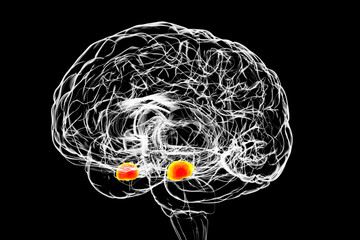
There is some evidence that mindfulness training improves cognitive function and emotion regulation in adult samples. Less is known whether a similar effect generalizes to adolescents, given that adolescence is a developmental period in which cognitive and self-regulation functions are in the process of maturing.
Dumontheil et al. [Journal of Adolescence] tested the effect of mindfulness versus relaxation training on task-based cognitive performance and brain responsiveness to emotional stimuli in adolescents and adults. Their intent was to discern whether adults and adolescents responded to mindfulness training in the same way.
The researchers randomly assigned healthy, meditation-naïve British adolescent (N=28; average age = 14 years) and adult females (N= 23; average age = 28 years) to mindfulness or relaxation training. Trainings were offered in 8 weekly 90-minute group-based sessions with daily homework practice assigned.
Mindfulness training was based on “Learning to BREATHE,” a public school-based program founded on the principles of Mindfulness-Based Stress Reduction. Relaxation training taught a variety of unspecified relaxation techniques and skills.
Participants were assessed before and immediately after the training conditions on two computerized tasks. One task was used to assess attention control and a second emotional “N-back” task was used to assess emotion regulation. Participants completed these tasks while undergoing functional brain scans (fMRI).
The attention control task had participants view computer presented slides with a fixation cross with asterisks above or below the cross. The asterisks cued participants to look where a stimulus would most likely subsequently appear. The stimulus consisted of a set of arrows either all aligned in the same direction or with one misaligned arrow.
The attention control task required participants had to judge whether the stimulus arrows were all in alignment. The asterisk cueing where the stimulus was likely to appear was misleading 20% of the time. This required participants to reorient their attention when the stimulus finally appeared.
The emotional “N-back” task had participants view a series of computer-presented slides with a numeral appearing on each slide. Participants had to respond whenever a numeral was identical to one presented two slides earlier. Some numerals were presented alone, but others were flanked by pictures of happy, sad, or fearful faces that served as emotional distractors.
The results showed the misleading asterisks slowed attention task reaction time for the entire sample. Over the course of multiple trials, this slowing in reaction time significantly decreased in the mindfulness group but not in the relaxation control (d = -0.57). This effect was similar for adults and adolescents.
The study groups were similar on emotional “N-back task” accuracy and reaction time. However, adolescents in the mindfulness group showed a significant decrease in left amygdala activation in response to the emotional faces, whereas adolescents in the relaxation group and adults in either training group did not.
The amygdala is a part of the brain’s limbic system that is implicated in emotional responding. Decreased amygdala activation may indicate that the adolescent mindfulness group was better able to focus on the stimulus and ignore the task-irrelevant distracting emotional faces.
This study shows that mindfulness as compared to relaxation training results in improved reorientation of attention for adults and adolescents and improved emotional regulation in adolescents but not adults. This suggests that mindfulness training might offer a unique benefit for adolescents in terms of emotion regulation.
The study is limited by its small sample size, lack of predefined fMRI regions of interest, and by the use of a single teacher facilitating both groups.
Reference:
Dumontheil, I., Lyons, K. E., Russell, T. A., & Zelazo, P. D. (2022). A preliminary neuroimaging investigation of the effects of mindfulness training on attention reorienting and amygdala reactivity to emotional faces in adolescent and adult females. Journal of Adolescence.
Link to study